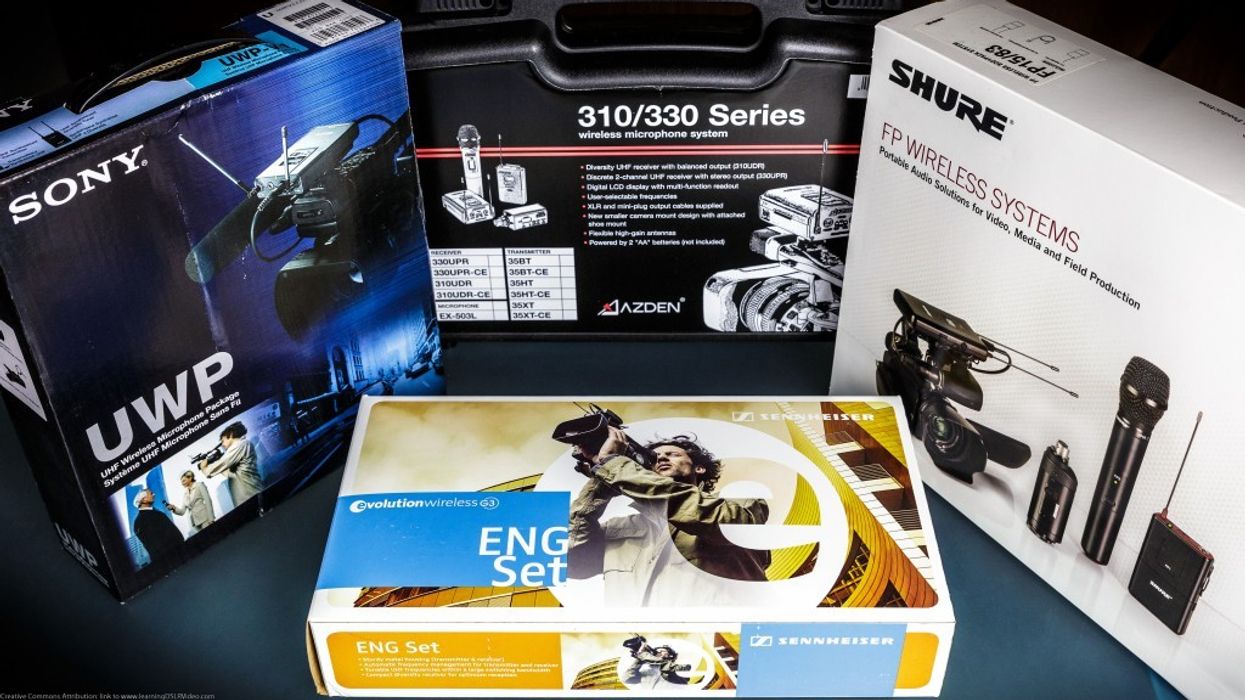Good location audio will make your film shine. The less you have to redo in post the better, as nat sound will bring a level of realism to any project. There are many tools available to help you achieve better sound, from a bevvy of tried and tested field recorders to some crucial on-camera mics like the ever-popular Rode, but what about those hard-to-reach areas away from the camera? Clearly wireless mics are the solution, but which mid-range system is the best? Thanks to Dave Dugdale of Learning DSLR Video, we have our answer. Check out the wireless mic battle of the ages after the jump.
Here is Dave Dugdale with The Great ENG Wireless Mic Shootout!:
[youtube https://www.youtube.com/watch?feature=player_embedded&v=WSva5W30pN4#! expand=1 site_id=26256498]
There were four wireless systems involved in Dave's Shootout. They were:
The biggest section I want to point out is the Output Level and Noise Test. Dave says:
The Shure wins here by a lot. The Sennheiser and the Sony are tied and they Azden does absolutely terrible.
Long story short on the Azden -- don't. I mean, if it's between that and two cups with some string between them, okay but... just don't. They've got a long way to come before being in league with the wireless greats. If you've used them, you know what I'm talking about.
I'm surprised that the Shure stood out so far in this test, but if you watch the video, it all really does make sense.
I'm not at all surprised by the Distance Test. Sony and Sennheiser both have solid field reputations, and this simply solidifies that. I think Shure is usually going to be more of a studio company, and that is okay, they play to their strengths (though arguably Sennheiser still takes the title there, too).
Before watching/reading Dave's Shootout, I have to admit my bias for the Sony UWP system. I've used it in my kit for many years, since way back in the day of the Z1U, and it's never failed me. I've frequently hooked up the cube transmitter from the UWP-V6 system to a boom mic as well. The Sony system is built like a tank and has taken many a fall from a clumsy actor's fiddling. However, I can't ignore his case for the Sennheiser, and that shouldn't surprise me at all. Sennheiser is a company with an outstanding reputation, but when I think "field audio," my mind just goes to Sony, and for "dialog" my mind goes to Shure. I'm probably also biased because of my Sony MDR-7506s, which I've had for as long as I've been filming.
One of the opinions Dave mentions earlier on is that he's not into dual system sync sound. I happen to be on the other side of that coin. Yeah, it can be a pain to sync in post if you don't have the right tools, but that's why you get the right tools, like Plural Eyes, which makes syncing a breeze on Final Cut Pro/Premiere/AVID Media Composter. Dual system forces you to slate everything, which is good for everyone on-set, and it helps with the flow. It also allows the mixer and boom op to simply run off and do their audio thing, which is less hassle for the cam op.
Another small deviance I'd like to make: Dave makes the point more than a few times on the blog as well as YouTube comments that these mics may be out of his core audience's price range. We have a lot of DIY/indie readers ourselves, and my advice is a little more forward than his -- PONY UP AND GET A GOOD WIRELESS SYSTEM. Yes, I know that f/1.4 50mm would go lovely with your Canon 5D Mark II. So will that f/1.4 20mm on your Panasonic GH2 (hard for me to deny that one!). But if you're not invested in a good audio system, with all the flexibility it brings for great on-set sound, and you're simply relying on post audio for all your principle dialog while still working on a budget... my friend, your production is going to sound iffy. Making your film look iffy. Making this kitten cry.
Ultimately in the film world, you get what you pay for. What mics are go-to's in your world? Has anyone had any awesome and/or horror stories with any of the systems listed above?
Link: Sennheiser G3 Sony UWP Shure FP Azden 330 Wireless Mic Shootout -- Learning DSLR Video












